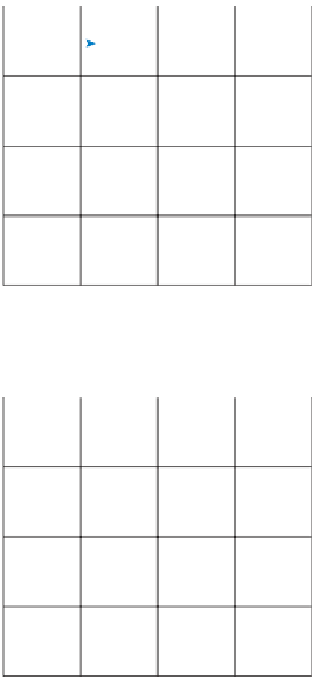Geography Reference
In-Depth Information
h e procedure is illustrated in Figure 10.13. h e smallest accumulative cost distances
that have not yet been included are indicated by bold characters.
In step 1, the cost distances are measured from the source cells, and the smallest cost
distance (36.5) is selected. h e cost distances are then measured from the selected cell
and the smallest non-selected cost distance (37.5) is selected, the end result being
step 2. Next, the cost distances are measured from that cell location and the smallest
non-selected value is selected (44)—this is step 3. h e cost distances are then mea-
sured from the selected cell and the smallest non-selected cost distance is selected
(44.5), leading to step 4. h e cost distances are measured from this cell and the small-
est non-selected cost distance (72) is selected—this is step 5. h e cost distances are
measured from this cell location and the smallest non-selected value (76.5) is selected.
At er the distances are measured from that cell all accumulative cost distances have
been computed and the i nal grid is step 7.
h e direction of the least accumulative cost path for the above example is given in
Figure 10.14 while the origin of the least cost path (i.e. the parent cell) is given in
Figure 10.15 (1 and 2 being the values assigned to the source cells).
0
44.5
88.5
111.5
44
61.5
87.4
72
84.5
83.9
50.9
36.5
116.5
76.5
37.5
0
Figure 10.14
Direction of the least accumulative cost path.
1
1
1
2
1
1
2
2
1
2
2
2
2
2
2
2
Figure 10.15
Origin of the least accumulative cost path.























Search WWH ::

Custom Search